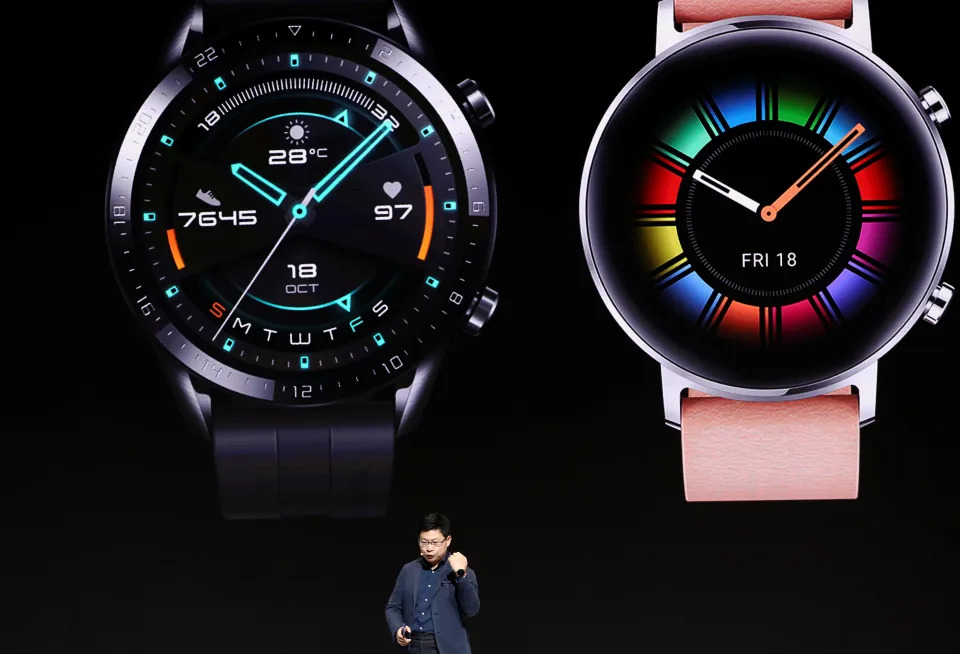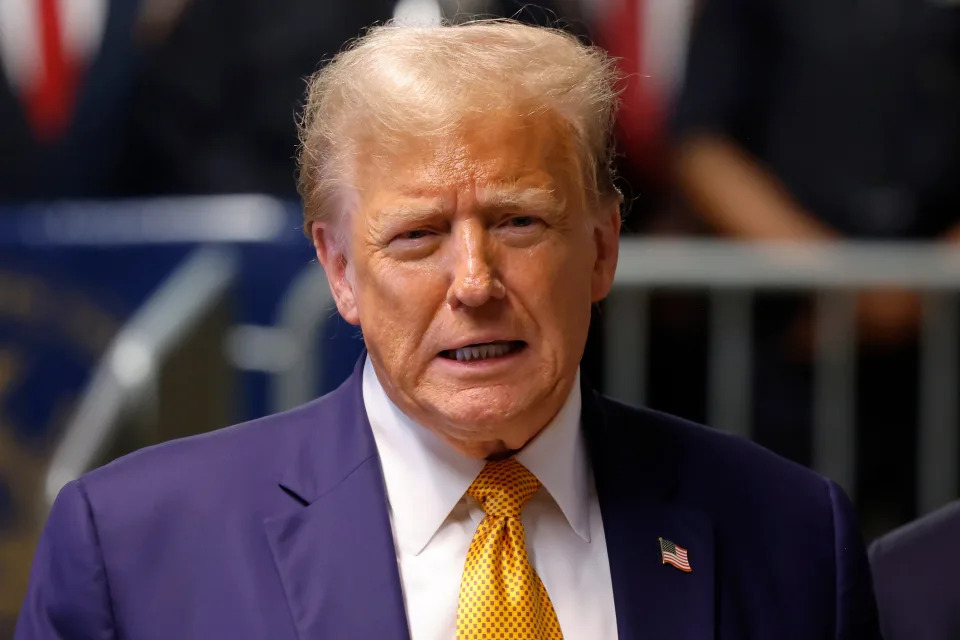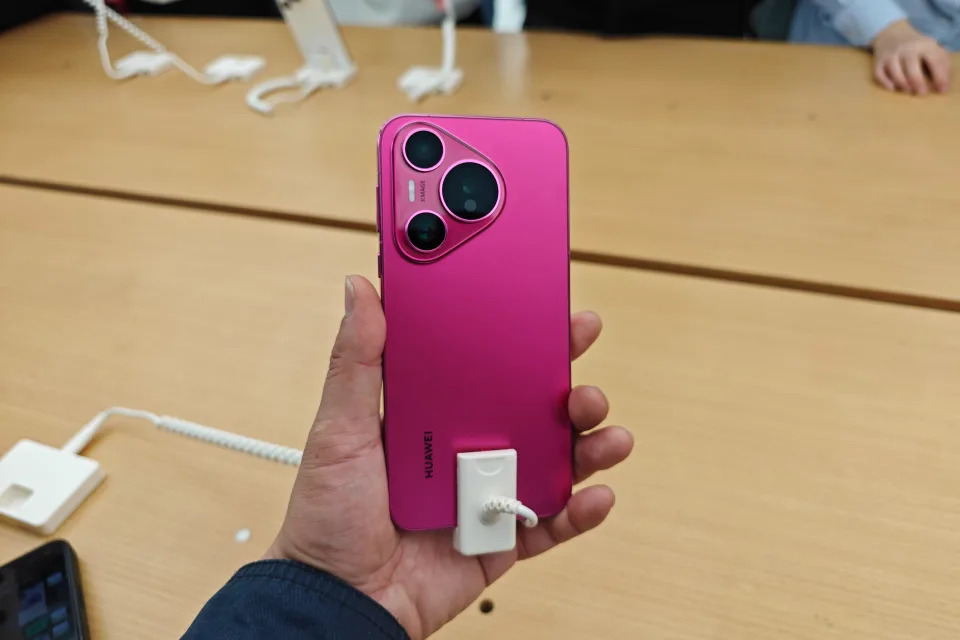Aaron Mok,Jordan Hart
Sun, June 2, 2024
Huawei, a Chinese telecommunications company, has become one of the world's biggest tech names.
It started off manufacturing equipment before venturing into smartphones and more.
Here's how it rose to compete with tech titans like Apple.
Huawei has become one of the world's biggest, most controversial tech companies over nearly 40 years.
The Chinese tech giant started as one of the world's leading networking equipment producers, making items such as base stations, routers, modems, and switches that provide phone service and internet access worldwide.
It has expanded its product line to include wearable devices and, most notably, smartphones, which have become a major competitor to Apple's iPhone in China.
The company had about 207,000 employees as of 2023 and operates in over 170 countries and regions. In the same year, Huawei hit nearly $100 billion in revenue and more than $12 billion in profit.
Ren Zhengfei, the CEO and founder of Huawei, came from humble beginnings but was worth $1 billion as of 2022, according to Forbes.
Still, the company has been mired in controversy, with the US accusing the Chinese company of stealing trade secrets.
Here's how a tiny IT technology firm in China became a rival to Apple — and became seen as a national security threat in parts of the world.
Ren Zhengfei founded Huawei in 1987 when he was 44 years old in an apartment in Shenzhen, China.

Ren Zhengfei is the 79-year-old CEO of Huawei.Reuters
Ren said Huawei's registered capital was roughly 21,000 yuan, or just under $3,000 as of May 2024. He said he didn't receive "a single penny" from the Chinese government and pooled funds from outside investors.
The CEO said he had no experience building a company.
Huawei started as a reseller of telephone switch equipment made by a Hong Kong manufacturer.
"We worked very hard and made our first money during those early years," Ren said in Huawei's docu-series.
When Huawei's business boomed, the Hong Kong company stopped supplying Huawei with routers, forcing the startup to develop its own telecommunication products.
Huawei focused on research and development for its initial telecom products during the 90s.

Employees worked around the clock when Huawei first started out.INDRANIL MUKHERJEE/AFP via Getty Images
Since major cities in China were dominated by big players, Huawei sold telecom equipment to rural areas that could withstand harsh weather conditions.
By 1995, the company generated nearly $220 million in sales, according to the BBC.
Lyu Ke, a member of Huawei's supervisory board, said in the company's docu-series that during its early days, employees worked day and night without leaving the building for almost a month.
"If you feel tired, you go for sleep, take a shower, and go back to work," Lyu said.
In the 2000s, Huawei decided to expand its operations beyond China.

Huawei's first years weren't easy.Costfoto/NurPhoto via Getty Images
The first few years in the overseas market were rough as they struggled to sell their equipment to customers.
"After I started Huawei, it was very difficult to ensure the company's survival," Ren said in a 2019 interview with CBS.
By 2000, its international sales reached US$100 million, and by 2005, international contract orders exceeded domestic sales for the first time.
During its foray beyond China, Huawei started to enter the consumer device market.

The Huawei U626 (pictured) was the company's first 3G phone.Ricky Wong/MCT/Tribune News Service via Getty Images
In 2004, the company shipped its first phone, the C300, with features like basic voice calls and SMS, a text messaging service.
Two years later, the company released the Huawei U626 — its first 3G phone — with a color screen, camera, and faster data connectivity, an effort to enter the advanced phone market.
The company released a USB modem in 2006, which could be plugged into computers to access the internet.
By the late 2000s, Huawei reached a series of financial milestones.

Despite some rough years, Huawei carried on through the 2000s.STR/AFP via Getty Images
Between 2008 and 2009, contract sales increased by 46% — most of which came from overseas — and generated close to $23.3 billion in revenue, according to Reuters. The company was also seeking to expand in the US.
Following the success of its smartphones, Huawei expanded into wearable devices

Since the success of its cellphones, Huawei has ventured into more smart devices.Michael Dalder/Reuters
In 2015, the company released the Huawei watch, which combined typical watch functions with modern smartwatch features.
By 2019, the telecom giant seemed to be leading the 5G revolution for faster wireless connection globally

Huawei founder Ren Zhengfei remains CEO.AP Photo/Vincent Yu
As of February 2019, the company had more than 30 contracts for 5G and deployed more than 40,000 5G stations globally, the LA Times reported, demonstrating its global influence. Huawei execs claimed that the company was ahead of America's most advanced providers in developing the technology.
Huawei employees reportedly say the pay is stellar despite the tough work environment.

Huawei is known for its intense work culture.Tingshu Wang/Reuters
One former employee said workers get juicy bonuses that "usually exceed our base salary" for finishing projects.
"It's just obscene amounts," the employee told the LA Times in 2019.
Another employee told the outlet that Huawei gives employees the option to buy company shares if they hit performance goals.
The compensation for workers seemed to have offset the company's so-called "wolf culture," where some were expected to take on the work of three people, sources told the LA Times.
In performance reviews, Chinese staff are reportedly ranked A, B, C, or D, where workers are pitted against one another to succeed.
Workers who received a score of A got double the bonuses employees who scored B got, a Shenzhen-based employee told the Times. Those who scored C — which 10% of staff must get — for two consecutive years were fired.
Huawei's smartphones, one of its most successful consumer products, are now a rival to Apple's iPhone in China

The Huawei Mate 60 rivals the latest iPhone.Wang Gang/Getty Images
The company introduced Ascend, its first line of smartphones, in 2010 in a move to enter the global smartphone market following the release of the iPhone.
Two years later, Huawei launched the Ascend P1 S, which was said to be one of the thinnest smartphones in the world at the time. It later released high-end phones like the Mate and P Lines, and lower-end devices with its offshoot brand Honor.
Still, Huawei's ascent to the international arena has included controversies

Huawei faced major accusations regarding confidential information from multiple companies.Costfoto/NurPhoto via Getty Image
In 2003, hardware giant Cisco sued Huawei, accusing the company of stealing network router technology, which Huawei eventually settled.
Then, in 2010, Motorola hit the Chinese company with a suit alleging that Huawei conspired with several Motorola workers to steal trade secrets. Motorola agreed to drop the suit in 2011.
And in 2017, a jury decided that Huawei misappropriated trade secrets belonging to T-Mobile in a series of incidents that occurred in 2012 and 2013.
The United States saw Huawei as a potential threat to national security

Donald Trump signed an executive order that banned Huawei products from the US in 2019.Getty Images
The US and other countries have expressed concerns that Huawei's equipment could be used for espionage by China.
In 2012, the US House of Representatives Intelligence Committee released a report asking US companies to avoid using Huawei products because of cybersecurity concerns. In 2018, AT&T killed a deal with Huawei to sell its smartphones across America.
Between 2017 and 2018, as tensions between the country and the company rose, the Donald Trump administration restricted federal agencies like the Department of Defense from using the telecom giant's equipment.
In 2019, the US cracked down even further on Huawei, with former president Trump signing an executive order laying the groundwork to block it from selling equipment in the country. The blacklisting has since been expanded, and diplomatic tensions between China and the US have also ramped up.
In 2018, Meng Wanzhou, the CEO's daughter who is also Huawei's CFO, was detained in Canada on fraud and sanctions violation charges

Huawei CFO Meng Wanzhou.REUTERS/Lindsey Wasson
Meng Wanzhou was detained in Canada and subsequently placed under house arrest on extradition request by the US DOJ under the indictment of bank and wire fraud. The US accused her of sidestepping sanctions on Iran by selling technologies through the company Skycom.
The CFO awaited extradition to the US for three years.
In 2021, she was released from house arrest and returned home to China as part of an agreement with the US Justice Department.
Huawei continues to step up its competition against the iPhone in China

Huawei's new Pura70 phone has three cameras, just like the iPhone Pro.CFOTO/Future Publishing/Getty Images
As of early 2024, Apple lost its edge in China in smartphone sales, a major market, to local rivals like Huawei as iPhone sales declined.
Huawei's $960 Mate 60 Pro debuted in 2023 and wowed consumers and analysts as a viable alternative on the heels of an iPhone ban for Chinese government officials.
As if the Mate 60 wasn't enough, in 2024, Huawei introduced another series of smartphones called the Pura 70, starting at $760.
Huawei didn't immediately respond to Business Insider's request for comment before publication.
LA REVUE GAUCHE - Left Comment: Search results for Canada's Huawei 5G ban
No comments:
Post a Comment